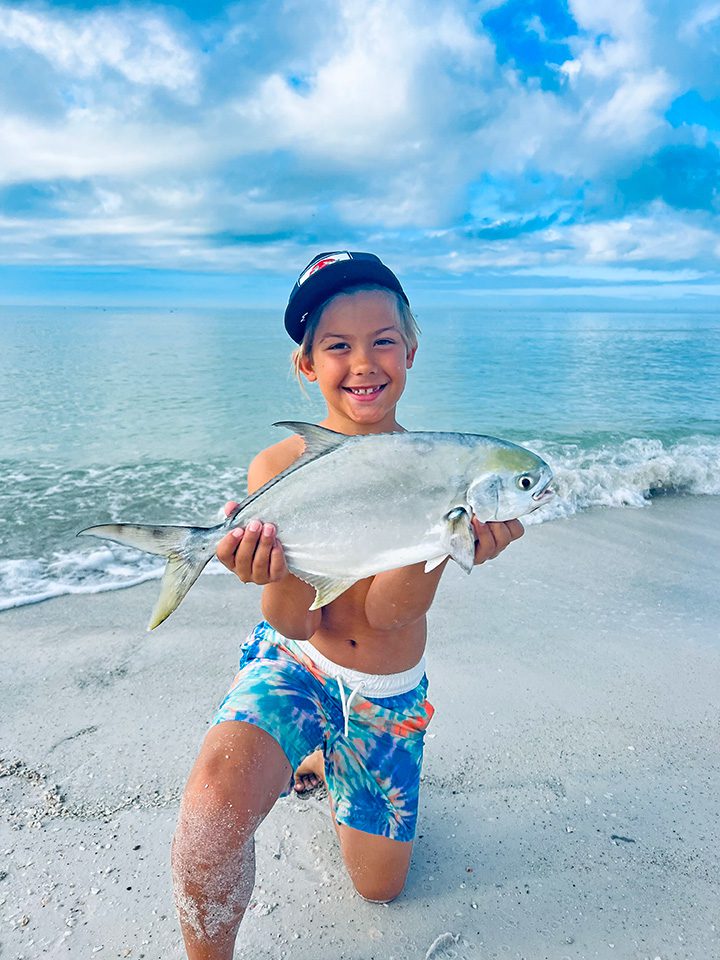The flash of silver skimming just beneath the surface of the breaking waves gives away the pompano’s identity. Their long, parallel runs as well as their heavier than expected pull makes catching these feisty little jacks all the more fun. Fishing from shore can be very rewarding, and when a school comes through the bite can be fast and furious but often ends as quickly as it starts.
The Florida pompano are widespread, inhabiting waters of the western Atlantic from Massachusetts to Brazil. These coastal crab crushers can be found running the beaches seasonally, and that season will be different depending on where an angler does his surfcasting. But no matter where or what time of year one intercepts a school of these tasty fish in the surf, the technique for catching them is pretty simple.
The mole crab or sand flea is a common food source. Live sand fleas are a great bait, and catching them is a trick in itself. At low tide, they can be captured as the waves recede. They give themselves away with a small V shape in the sand. Use a sand flea rake or small bucket to dig for them quickly before the next wave rolls in.
Another favorite pomp treat is a small shrimp or parts of larger one. Whichever bait you choose, check it often as bait stealers are just waiting for an opportunity. I have also found that pink, shrimp-scented FishBites can be a game changer when the standbys are not producing; they are extremely durable and can be presented many different ways.
Brightly colored pompano rigs (aka set rigs), bottom rigs or drop rigs—with two to three very sharp 1/0 or 2/0 circle hooks, and green/yellow/orange floats are a great starting point. I prefer pompano rigs with two hooks and a 1- to 3-ounce pyramid sinker as the anchor. Pyramid sinkers dig deeper into the sand than bell or barrel types and should be just heavy enough to prevent your rig from walking back to shore. Keep a few different weights at your disposal and adjust accordingly.
Try using different baits on each hook. I often switch between FishBites on one hook and a small piece of shrimp or whole sand flea on the other. When hooking a sand flea, push the hook through the underside of the crab then just barely penetrate the topside of the carapace with the point of the hook. This wedges the hook tightly and prevents cast offs.
Fishing the trough between the furthest sandbar and shore is a prime area, and a light, sensitive 7-foot rod and a 3000 to 5000 series reel spooled with 10 to 15-pound test are just about perfect. Arguably lighter is better, but where there are small fish there are often big fish, and I like to be prepared. As the sun kicks up the heat index, I often switch to a 10-foot surf rod with the same pompano rig and target the far edge of the sand bar. This deeper water seems to produce more fish midday.
Using this classic approach can mean the difference between soaking bait and actually catching fish.
Chris is a freelance writer from Wisconsin with an obsession for all things saltwater. He does most of his fishing on Florida’s Forgotten Coast.

